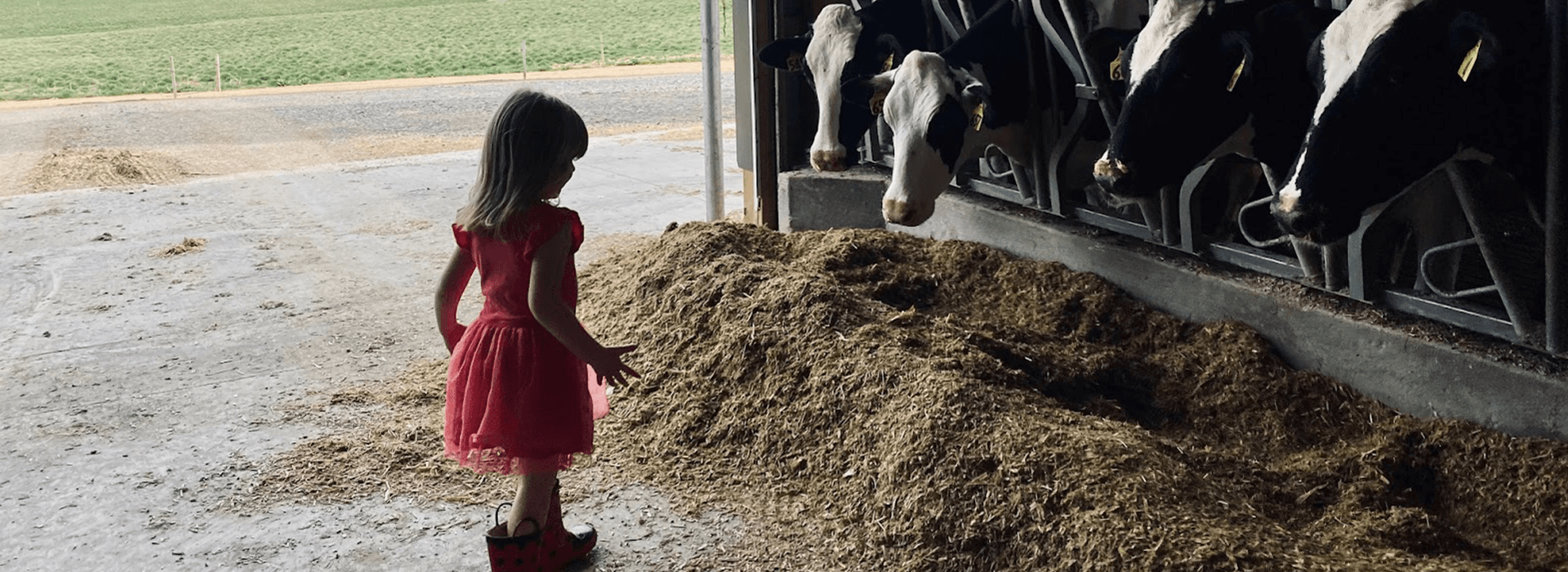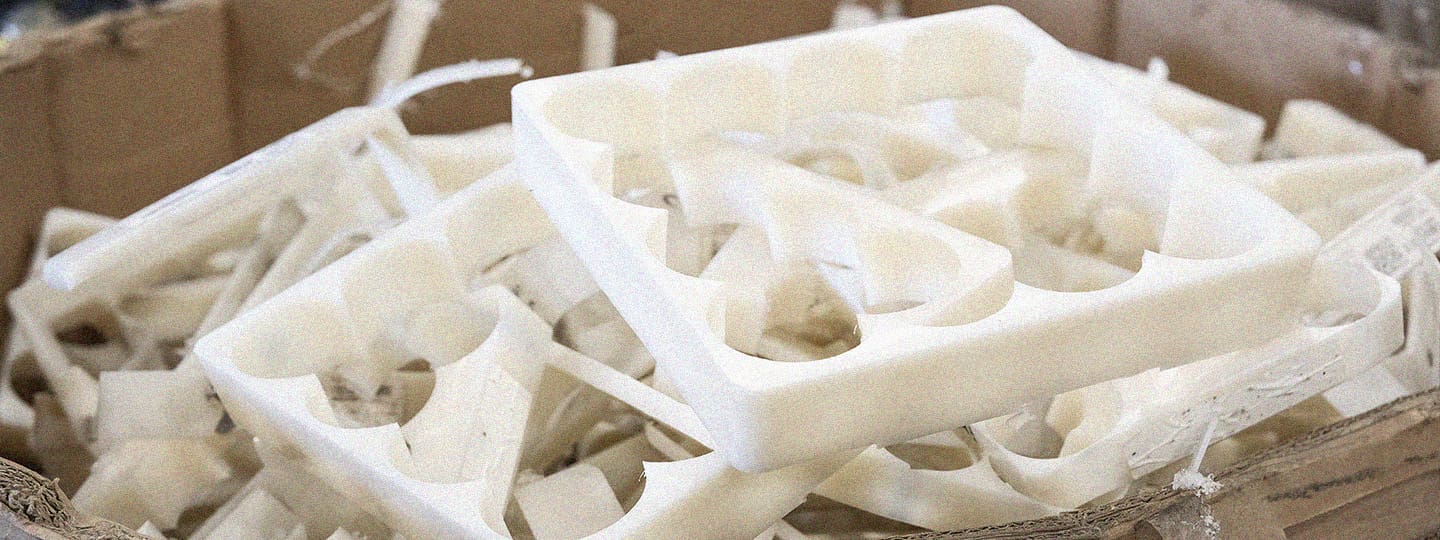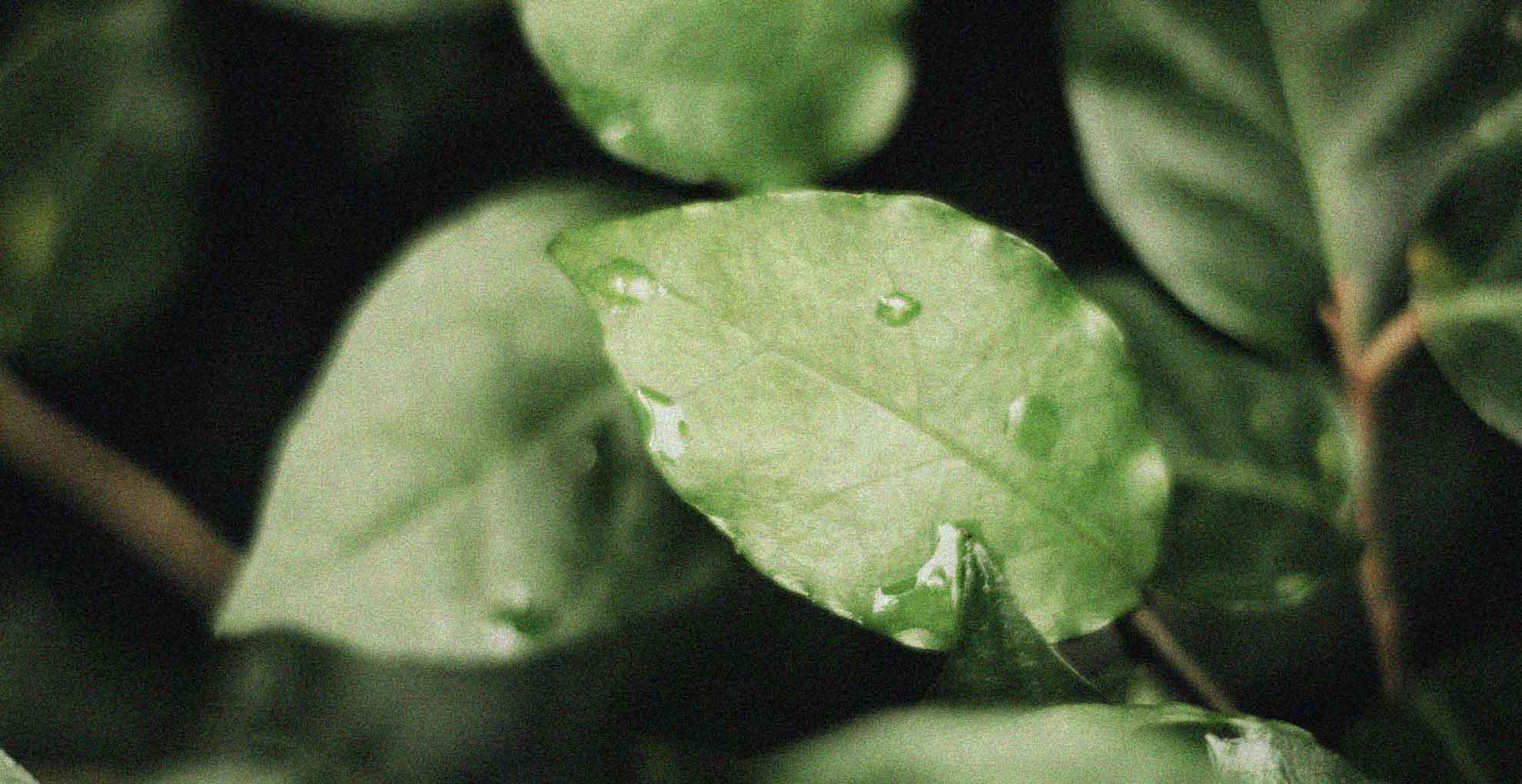Growing up, it was impossible to avoid the fact that our yard abutted a chicken farm. Before the row of pines at the rear of our property grew a couple of stories over my head—and when the wind blew just right—the aroma was overpowering, contributing to my understandable ambivalence toward my hometown’s leading industry. Farming is so influential here, in fact, that my high school held an annual Tractor Day, during which students drove their family’s tractors to school, parked them in the bus lane, and were excused from school for the day to host students out at the parking lot on their shiny farm equipment, a tradition I firmly eschewed.
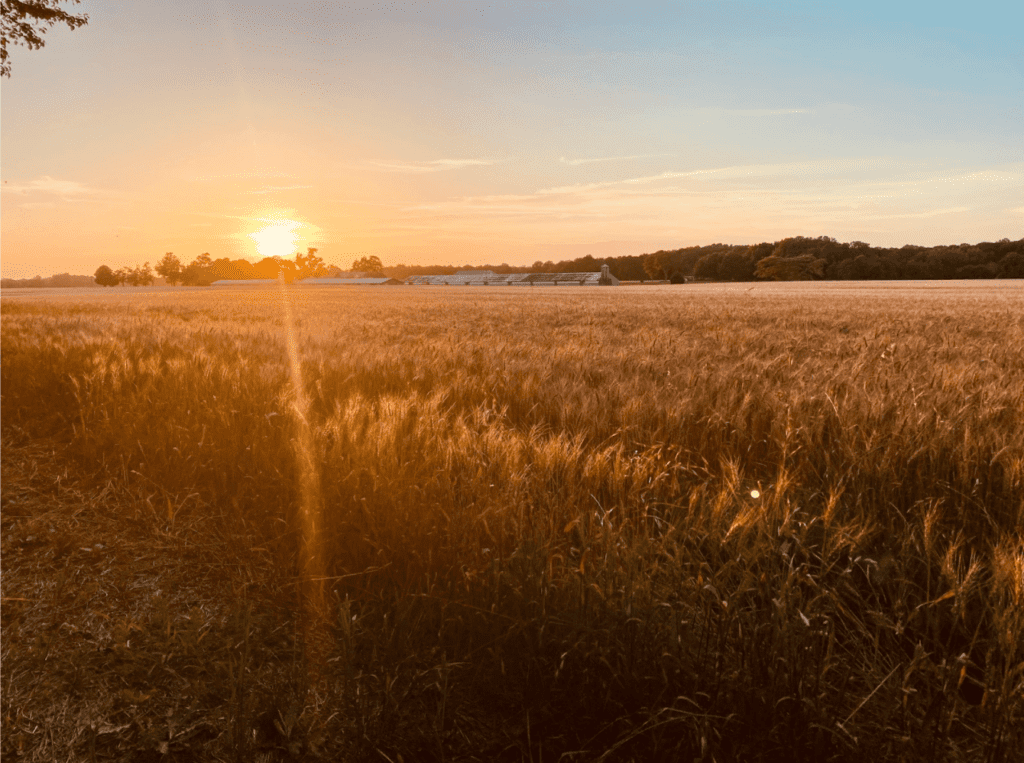
Those days, I was happiest when I was out on the Chesapeake Bay with my family in our boat, exploring the winding waterways around the Eastern Shore of Maryland and developing a deep, rooted love for the Bay ecosystem, its flora and fauna, and the way the light hit the water as the sun descended below the line of the horizon.
I didn’t understand how much this land shaped me, my values, and my career until years later as I was seeking my life path. Combining my love for the environment and my natural affinity for communication (i.e., I talked too much in class, and my mother started complaining early on about how hard it was to win an argument with me) led to a fulfilling career in energy communications. And at that, the older I got, the more I grew to deeply respect and appreciate the area where I was raised, the inherent simplicity and beauty of rural life, and the honest hard work of the region’s many farmers and agriculture industry workers.
That’s part of how I ended up driving a 50-foot tractor through a chicken farm for fun a few months ago.
My future sister-in-law grew up in an organic farming family. She graciously offered to take me, my 4-year-old daughter, and some other family members on a tour of a few of the area farms her family and friends owned, including a farm she monitors through her job as a quality assurance specialist for a national organic chicken brand.
It was early spring, and we suited up in our rain boots for what promised to be a muddy day. My daughter donned a bright coral sparkly dress, despite my objections about proper attire (don’t bother advising a 4-year-old girl on wardrobe choices). Despite my best efforts and promises about adorable baby chicks, upon a sniff, she was not even mildly interested in entering the chicken house.
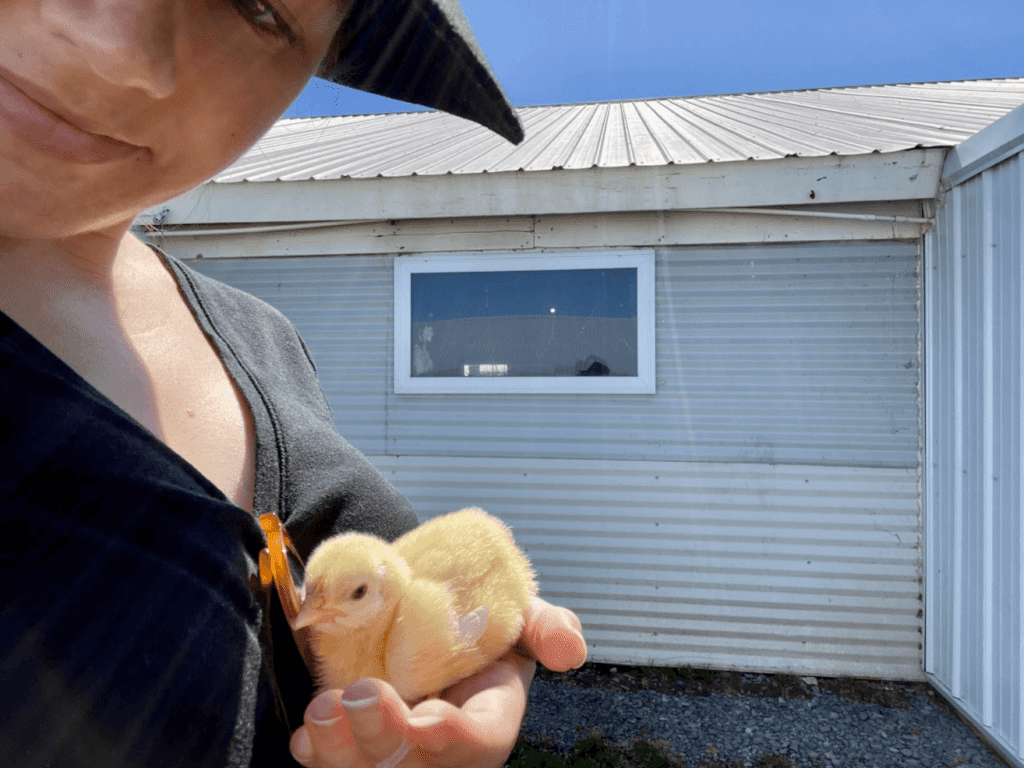
The aroma comes from ammonia in the chicken litter—or poop—and these cute babies create a LOT of it. Farms located on the Delmarva peninsula raise as many as 605 million broiler chickens each year, producing 14 million tons of nutrient-rich poultry litter or manure. This agricultural activity has major impacts on the delicate Chesapeake Bay ecosystem—and poultry litter is specifically one of the top contributors to excess nutrient runoff into the Bay while also producing massive amounts of greenhouse gas emissions.
Decades of efforts by Bay advocates and environmentally responsible farmers have led to some improvements, but there is still much work to be done. Delmarva area poultry farms could take a page from the dairy industry’s playbook and embrace anaerobic digestion technologies at their farms. Anaerobic digestion is a technology process that captures raw biogas (methane) from organic waste like manure and food scraps, then converts that waste into new products like low-carbon renewable natural gas (RNG) and organic fertilizers with a lower nutrient profile than the original waste. Farmers can sell the low-carbon fuel and use or sell the fertilizers to help reach their sustainability goals and provide new income streams. The climate benefits of anaerobic digestion can be tremendous—research shows that when all-climate benefits are considered together, RNG from dairy manure, specifically, can reduce greenhouse gas emissions up to 370% when it is used to replace traditional diesel fuel.
After visiting the chicks, I took a spin around the farm on a tractor, much to my dad’s complete shock and amusement, remembering how, 20 years ago, I rolled my eyes at my high school’s beloved Tractor Day.
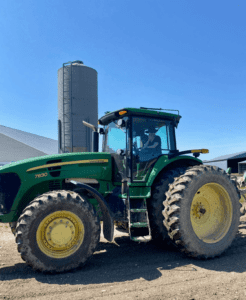
After spending time with the chickens, we hopped over to an area dairy farm that frequently hosts school field groups and provides visitors with an up-close-and-personal experience with the animals, literally.
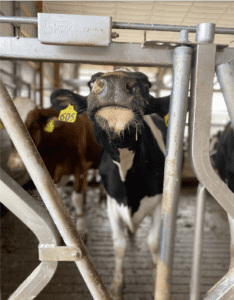
For all of the enthusiasm my daughter lacked for chickens, she made up tenfold for cows. The girl loves cows. I had no idea. She wasted no time in trying to feed every cow in the building by hand. I did not have a predefined view of what a dairy farm would look and feel like, but this experience vastly exceeded any expectations I did have. The farm was beautiful and clean, the cows relaxed and comfortable. These animals spend part of their days in airy, open-concept barns and ample time out grazing in fields nearby. Milking operations were swift and efficient with the assistance of a modern rotary milking parlor.
My daughter was in love, and I was ready to spend more time on farms. The timing was auspicious, as I’d spent the last few years helping Brightmark to share its work boosting agricultural sustainability with anaerobic digestion. The dairy industry has begun to embrace this technology while expanding its environmental ambitions broadly: the U.S. dairy industry has established the Net Zero Initiative, which aims to achieve net-zero greenhouse gas emissions and significant improvements in water quality by adopting economically viable technologies and practices throughout the industry.
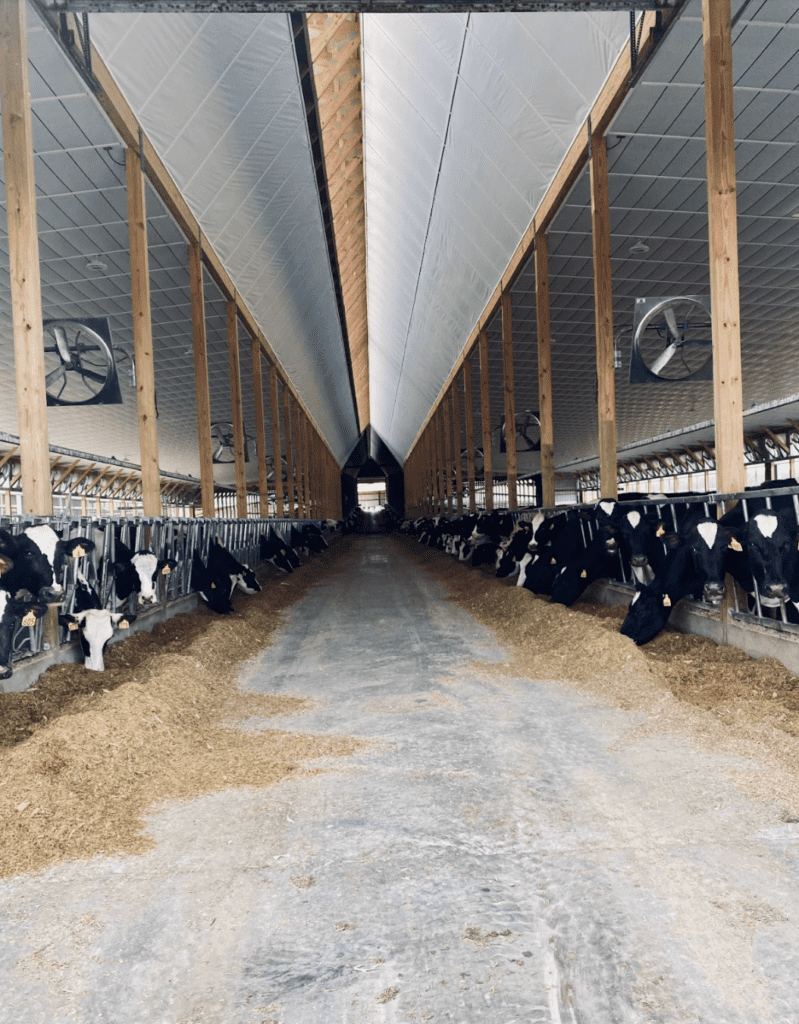
I hope to see the poultry industry set similar standards for the sake of the Chesapeake Bay and the ecosystems I dearly love.
I walked away from my day on the farm with a newfound appreciation for the agricultural industry and the people who ensure we have food on the table. If I were 16 again, I’d be an enthusiastic participant in Tractor Day. Hype girl for tractors, right here.
Reader Challenge: How can you learn more about food production near you? In what ways are these production systems sustainable, and where is there room for improvement? Finally, how can you be part of the solution?

